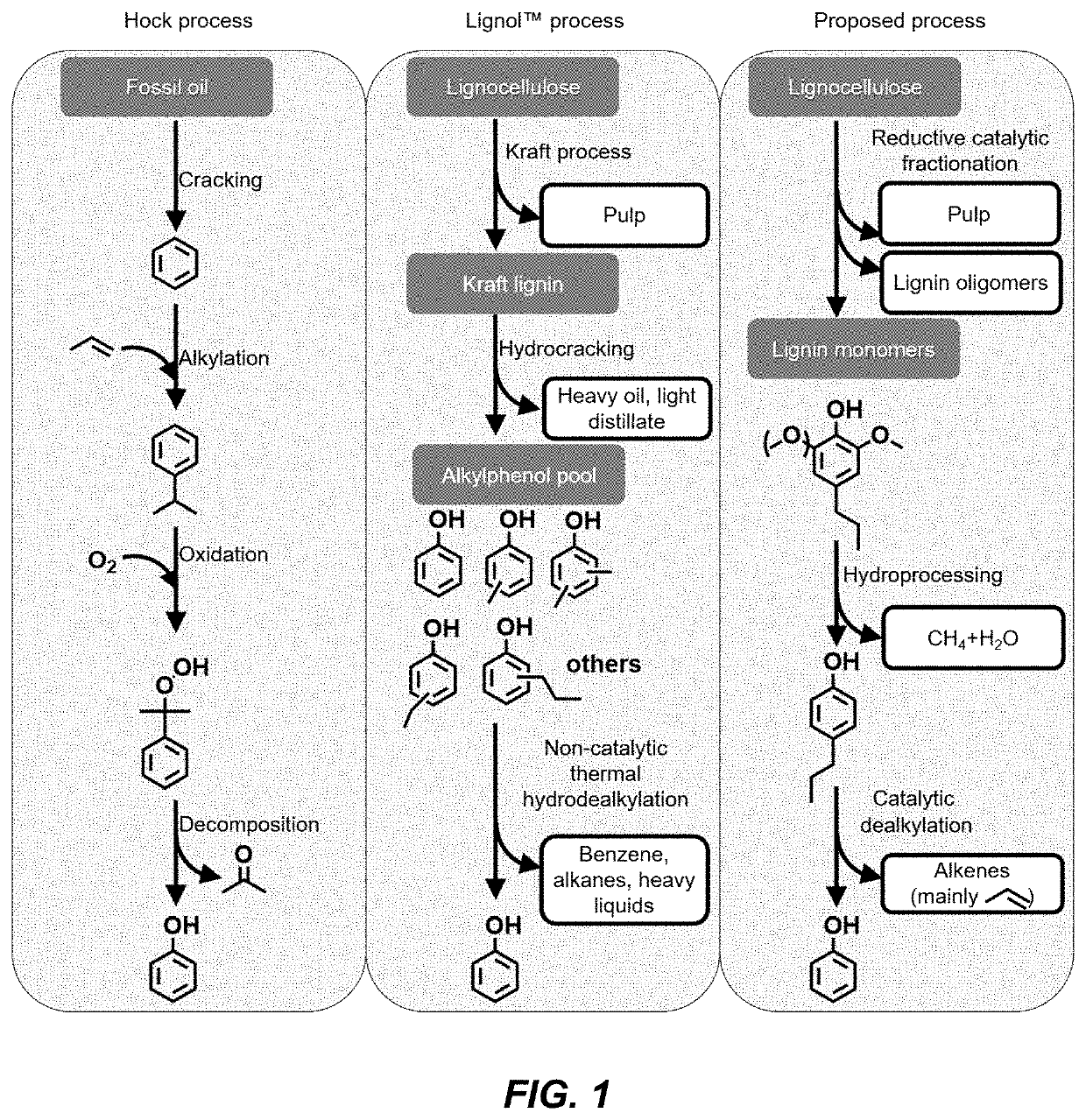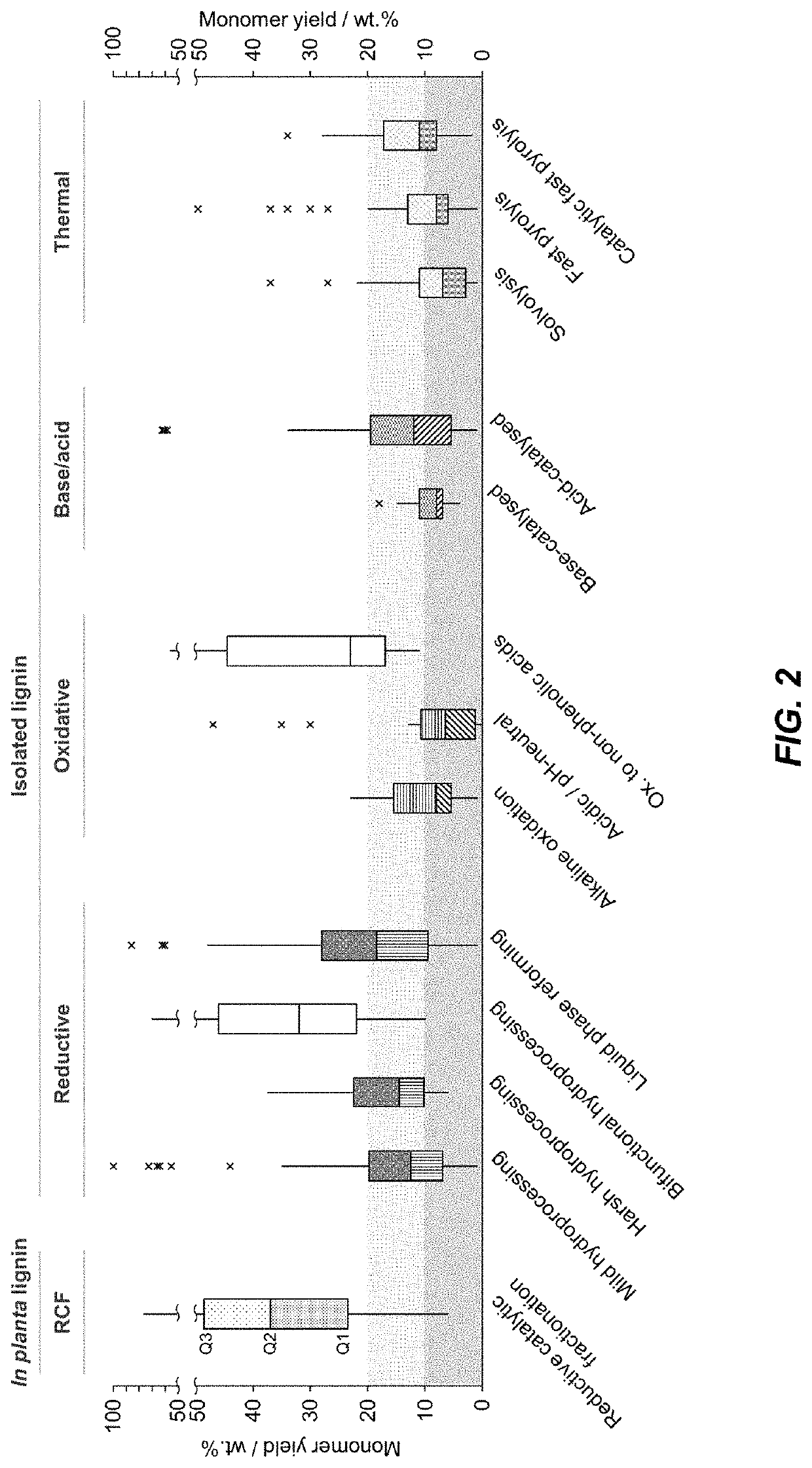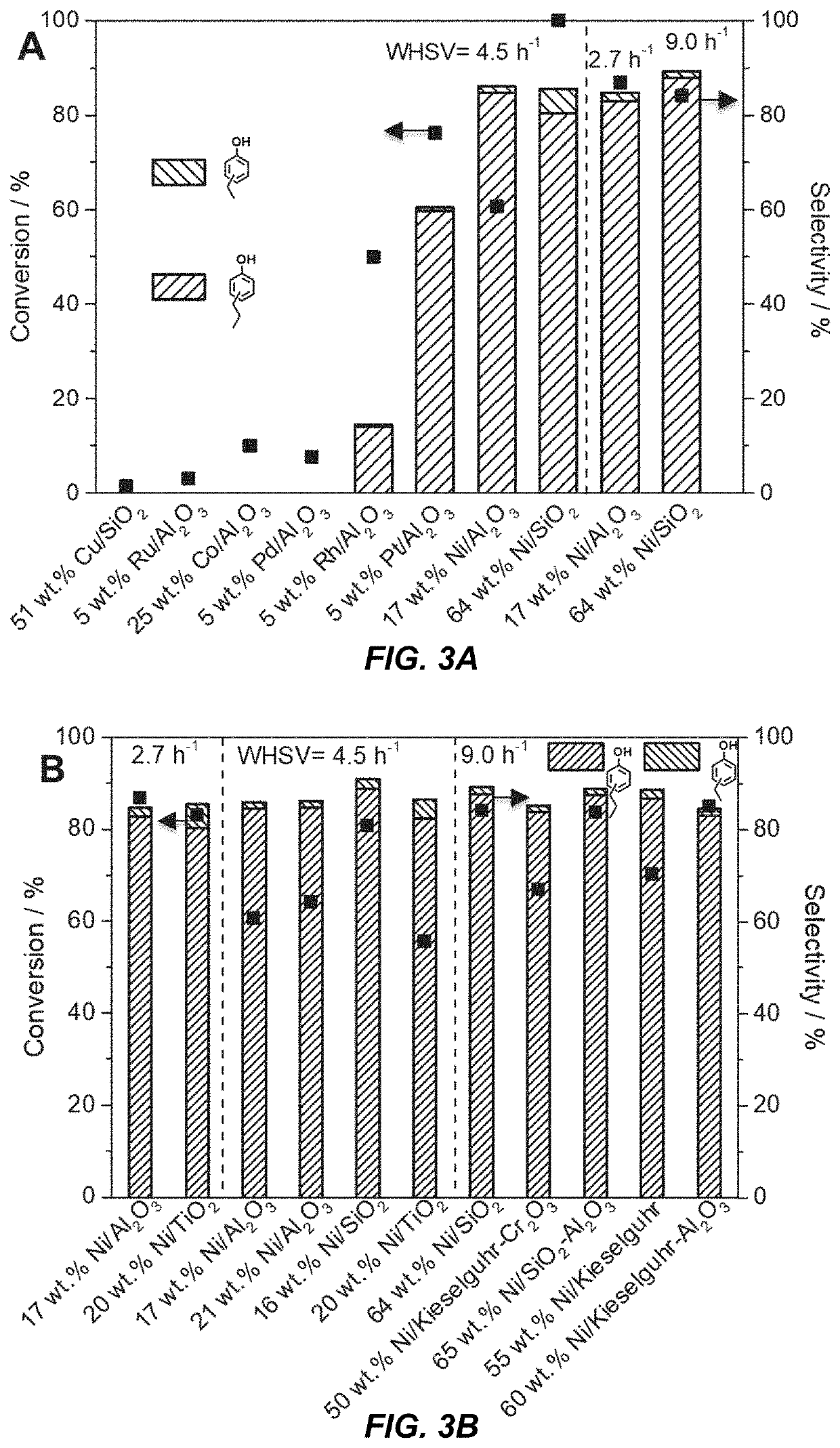Catalytic funneling of phenolics
- Summary
- Abstract
- Description
- Claims
- Application Information
AI Technical Summary
Benefits of technology
Problems solved by technology
Method used
Image
Examples
examples
[0128]Example 1. Reductive catalytic fractionation of birch wood. This experiment was performed according to experimental procedure I. birch wood (150 g) was used as the feedstock, 5 wt % Ru / C as a catalyst, and methanol as the solvent. The reaction was conducted at 235° C. for 3 h under 30 bar of H2 (room temperature). Conversion of lignin: 80.69%. Monomers yield (on the basis of Klason lignin): 4-propylguaiacol (9.71 wt %), isoeugenol (0.49 wt %), 4-(3-methoxypropyl)-guaiacol (<0.19 wt %), 4-n-prop-1-anolguaiacol (0.89 wt %), 4-ethylguaiacol (0.30 wt %), 4-propylsyringol (33.85 wt %), 4-prop-1-enylsyringol (0.32 wt %), 4-n-prop-1-anolsyringol (2.21 wt %), syringol (0.43 wt %), 4-methylsyringol (0.28 wt %), 4-ethylsryingol (1.03 wt %), 4-(3-methoxypropyl)-syringol (0.79 wt %), others (<0.02 wt %), total monomers (50.51 wt %). Oligomers (30.18 wt %).
[0129]Example 2. Reductive catalytic fractionation of pine wood. This experiment was performed according to experimental procedure I. p...
PUM
| Property | Measurement | Unit |
|---|---|---|
| Temperature | aaaaa | aaaaa |
| Temperature | aaaaa | aaaaa |
| Fraction | aaaaa | aaaaa |
Abstract
Description
Claims
Application Information
 Login to View More
Login to View More - R&D
- Intellectual Property
- Life Sciences
- Materials
- Tech Scout
- Unparalleled Data Quality
- Higher Quality Content
- 60% Fewer Hallucinations
Browse by: Latest US Patents, China's latest patents, Technical Efficacy Thesaurus, Application Domain, Technology Topic, Popular Technical Reports.
© 2025 PatSnap. All rights reserved.Legal|Privacy policy|Modern Slavery Act Transparency Statement|Sitemap|About US| Contact US: help@patsnap.com



